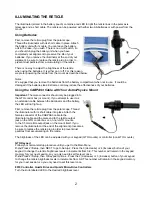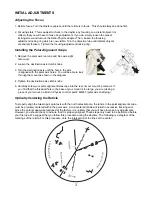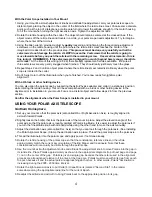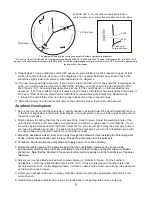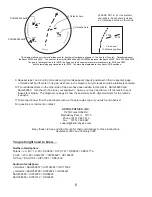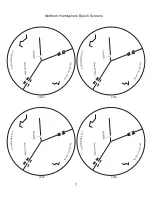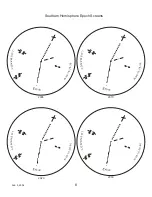
1
ASTRO-PHYSICS, INC.
POLAR ALIGNMENT TELESCOPE (PASILL4)
This is our current model which began shipping in November 2005. It has an updated reticle good through 2030.
It fits all 400, 600, 600E, 800, 900 and 1200 models (except the original black 1200s) and the new Mach1GTO.
PARTS LIST
Polar Alignment Telescope with two covers
Battery pouch, including:
Illuminator with cable
Battery holder with cable and two AA batteries
0.9mm Allen wrench
27.5” Cable to power the reticle from your Astro-Physics mount (part # CABPAS3)
POLAR ALIGNMENT TELESCOPE
This Polar Alignment Telescope (also called a polar axis telescope, polar finder or polar scope) will help you to align
your mount with the Celestial Poles. When your mount is properly aligned, your telescope's drive will accurately
track celestial objects as they pursue their daily motion across the sky. This will allow you to keep the object you are
viewing in the center of your field-of-view, and eliminate the need for manual adjustments. This polar scope can be
used in both the Northern and Southern Hemispheres.
THE RETICLE
Your Polar Alignment Scope has a new reticle, designed for accurate alignment from 2005 until 2030. Two
alignment stars have been added for the Southern Hemisphere to help with the trickier alignment faced by those of
you who are "down under."
Why did the reticle need to be updated?
We think of the stars as being fixed in space, but this is not the case.
There are two principal ways in which the stars' motions require us to periodically revise the reticle for accurate
alignment. First, and most important, is actually our planet's fault. The earth's tilted axis precesses like a spinning
top that has been bumped. It's axis traces a circle in the sky every 26,000 years or so. This means that the actual
pole's position is constantly changing with respect to distant stars, albeit very slowly. (It also means that in 13,000
years, our distant ancestors will have exactly reversed seasons.) Second, the so called fixed stars, along with our
sun, are actually whirling around the gravitational center of our galaxy in various elliptical orbits. Because of this,
each star has its own proper and apparent motion in the sky relative to every other star. These motions are
generally not noticeable to the naked eye, but they can be enough to affect the accuracy of star charts and reticles
over a period of years.
Why do Polaris and
F
Octantis only have one radial line in the reticle and why do they move within their
gaps from epoch to epoch?
Polaris in the north and
F
Octantis in the south are used as pivot stars to which the
other stars must be related in order to arrive at the true pole. This is done to simplify the alignment process. As
their positions relative to the actual pole change in right ascension, the other stars' radial lines are adjusted to
compensate. However, there is no way to also compensate for their changes in declination, so a gap is required
along their respective radial lines. As their declinations change over time, their positions within these gaps must
also change accordingly. During the 25 years covered by the reticle, Polaris' declination will increase by about 6
minutes of arc, while
F
Octantis' declination will increase (become less negative) by about 7 minutes.
Polar Axis Scope Specifications:
Objective lens: 15 mm
Field of View: 10°
Objective lens
Astro-Physics adapter
Aligning adjustment
setscrew (1 of 3)
Collar
Reticle plug
Diopter eyepiece
Reticle housing
Preset locking screw
Focusing Adjustment Locking Ring
(under A-P adapter)


